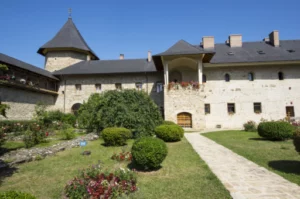San Antonio’s Skyline: The Quest for Taller Buildings
In sunny San Antonio, locals often ponder, “Why can’t this be taller?” This question pops up with every new development design that makes its way into the public eye. Residents are buzzing about numerous new projects, including a 10-story Residence Inn by Marriott set for 100 N. Main Ave, a mixed-use venture from Post Lake Capital Partners at Hemisfair, and a three-story hotel by Terry Black’s BBQ in the Lower Broadway corridor. However, the enthusiasm for towering new buildings is often curtailed by some pretty hefty barriers.
Cost: The Great Constraint
One of the main reasons San Antonio isn’t seeing a city full of skyscrapers? It’s all about the dollars. Even though interest rates have started to become more manageable, the cost of construction and debt financing are still placing a damper on developers’ lofty ambitions. But financial issues are just part of the story.
City Regulations and Restrictions
The city of San Antonio has its set of rules that can make erecting taller structures complex. The development code has several provisions that limit the height of buildings in downtown. For instance, if someone wants to build a skyscraper right next to the beautiful River Walk, they must ensure that the area receives a certain amount of sunlight each day—specifically, five and a half hours in winter and seven and a half hours in summer. This is to maintain the river’s unique microclimate.
Additionally, there are protections in place to preserve views of historic sites like the Alamo and the Spanish Governor’s Palace. Despite some common misconceptions, the regulations don’t extend to the Tower of the Americas; however, urban residents have made their voices heard against developments that could obstruct their view of this iconic building.
A Balancing Act: Height vs. Community
When it comes to height, Lewis Vetter, the president of The Conservation Society of San Antonio, points out that there isn’t a universal measure for “too tall.” According to him, it’s all about building placement. If a new high-rise springs up next to cozy two-story buildings, it can seem out of place and disrupt the neighborhood vibe. “Maintaining the pedestrian experience is crucial,” Vetter explains, stressing that new buildings should enhance the overall ambiance of the area rather than detract from it.
Interestingly, Vetter also highlighted that over 30% of downtown’s footprint is made up of parking lots, which he believes could transform into significant growth opportunities.
Horizontal vs. Vertical: The Developer’s Dilemma
So why aren’t developers rushing to build more vertically? Kris Feldmann, owner of CREO Architecture, notes that unlike dense giants like New York City, San Antonio has the luxury of space. “There’s not the same pressure to build tall,” he explains. Developers here have room to spread out horizontally, leading to more limited vertical projects—typically in the eight-to-10 story range. In more urbanized regions like Austin, you often see high-end condos attached to mixed-use buildings, a demand not yet echoed in San Antonio.
The Future of San Antonio’s Skyline
Sam Stevens, a senior architect at CREO and a member of the city’s Zoning Board of Adjustment, believes that the East and West sides of the city could definitely welcome some growth in height, as long as it respects the nearby single-family neighborhoods. Stevens highlights successful projects like those around the Pearl—a showcase of how to build upward while honoring the neighboring community. “There’s plenty of room in downtown for density without ignoring those smaller, clustered neighborhoods,” he said.
A recent tour of the brand-new 300 Main apartment tower also offers a glimpse into San Antonio’s mixed-use future. With a major focus on enhancing density, Mark Jensen from Weston Urban believes that taller buildings, like this 32-story high-rise, are key to bringing more life to the downtown area. “We need to grow vertically to achieve the residential density we’re aiming for,” Jensen explains. However, he acknowledges the cost spikes that come with constructing taller and taller towers.
The Hope for More Towers
With projects like 300 Main setting a potentially successful example for future developments, Jensen is optimistic about the possibilities on the horizon: “I hope this encourages more buildings of similar height—ideally around 200 to 400 feet. We believe in tapering structures near the edges of the core to honor and blend into the adjacent neighborhoods.”
As San Antonio continues to evolve and grow, it seems like there’s a promising future in the city’s skyline. With careful planning and a commitment to blending new builds with existing architecture, who knows? We might just see that collection of towering skyscrapers become a reality sooner than we think!








